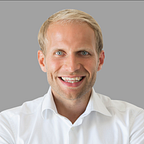Become great at creating new products and services people will love and buy
Understanding the root cause of why people buy and help them to make progress in their lives using your offerings.
The problem of problem-solving — What is a customer need anyway?
As stated in the post “Ideas don’t matter. Problems do.”, there is a simple equation for commercially successful innovation:
Innovation = Creating viable and feasible SOLUTIONS for unmet customer NEEDS.
But if it’s that simple and there are so many good ideas out there why is it that still 95% of them fail when launched in the marketplace*?
Even though most of the companies claim they are user-centric nowadays, there is just no common understanding and internal alignment of what a “need” really is. The term is ambiguous and could mean anything from desire, pain point, wish, expectation, gain, etc. (As explained by experts such as Tony Ulwick).
You get it. It is impossible to address a problem that is not properly defined and the chances that you build an adequate solution that really serves the customer expectation and therefore actually generates $$$ is incredibly low if you are trying to hit a moving target. It’s basically like guessing.
So how can we make better decisions about what customers actually want to achieve with our product or service?
As validated in many projects, I think the answer lies in a theory called Jobs-to-be-Done.
The overarching theme is that:
People don’t simply buy products or services, they ‘hire’ them to make progress in specific circumstances.
This is a really important change of perspectives as it goes beyond product attribute quality as a value and you really see the value of the product through the lens of the customer.
How does he/she measure the value of the product? What progress does he/she achieve with it?
Upgrade your user, not your product. Don’t build better cameras — build better photographers. — Kathy Sierra
Check this video to understand the perspective change. The photographer becomes the hero, not the product itself.
So, where to start?
With special interview techniques, you can categorize, define, capture, and organize the customer inputs that are required to make innovation predictable. You are basically creating a higher level of precision to win in the marketplace by addressing properly defined and quantified customer struggles.
Furthermore, the process of capturing user needs does not only take functional aspects of the decision making into account:
- Functional aspects: the practical and objective requirements
- Personal dimension: how the customer feels about using the product
- Social dimension: how the customer believes to be perceived by others while using the product
- Financial dimension: Willingness to pay the price, alternative solutions competing to make the same progress.
Analyze in detail the forces that push customers to adopt a new solution:
- Problem with the current solution
What you have to do: show the issues of the current product - Attraction to the new product
What you have to do: show how the new product solves the problems
and the opposing forces to change:
- Anxiety and uncertainty
What you need to do: reassure consumers that change is quick and easy - Habits
What you need to do: remove irrational ties to the current situation - according to Harvard Business School Professor Clayton Christensen
Related articles
Want to learn more about Jobs-to-be-Done?
- Competing Against Luck: The Story of Innovation and Customer Choice. Clayton Christensen’s book
- Video of Clayton Christensen lecture on JTBD
- Great products start with real problems.
Free eBook of Intercom approach to JTBD - Jobs to be Done: from Doubter to Believer.
Video with Sian Townsend, Director of Research of Intercom - JTBD info.
The Medium channel edited by Alan Klement
Want to reach out?
Sign up for my newsletter and get insights on new capabilities and processes to de-risk innovation.
👉🏼📩 Get all new posts straight to your inbox.
About Me
About Me
Helping companies with effective strategies and execution for a systematic, user- and growth-centered innovation.
My name is Fabian Roschig and I am a consultant for innovation strategies and innovation management.
My mission is to drive innovation at all levels, based on the individual strengths of each organization, to enable and accelerate sustainable commercial growth. Together we make this happen by setting clear goals, focusing on the right balance between strategy and execution, and using validated, systematic methods and tools that guarantee continuous, measurable results.
For more than 12 years, I have had the privilege to successfully plan, implement or optimize new strategies, products, and services, innovation programs, structures, agile teams as well as processes for a variety of clients and employers such as The Coca-Cola Company, Condor, kicker, Dr. Oetker or TUI. In doing so, I work closely with executive boards, middle management, cross-functional teams, and external service providers.
